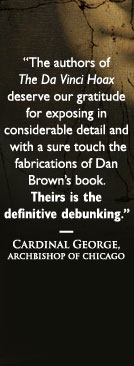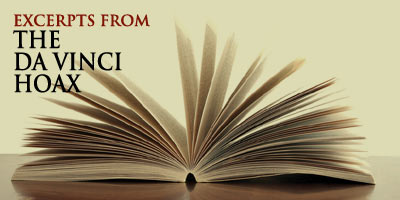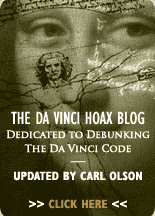



Chapter 7: The Templar Myth
The Templar myth started with an offhand remark by a Renaissance expert on magic. When German scholar Henry Cornelius Agrippa of Nettesheim wrote De occulta philosophia (1531), he happened to mention "the detestable heresy of the Templars" as an example of evil magic alongside witches, dualist heretics, pagan sex rites, and Gnostic abominations. The idea was picked up in France and embellished with lurid details about ancient Gnostic orgies and infant sacrifice. From this unpromising spark, a durable fire would kindle.
But several developments had to occur before the Templars could light up the occultist world. Freemasons had to emerge, a well as taste for various types of "illumined" mysticism. "Speculative" Freemasonry, as distinct from the "operative" craft of working stone, coalesced in Scotland in the 1590s when lodges of actual stoneworkers began to enroll outsiders who were interested in the symbolic possibilities of architectural knowledge. David Stevenson’s Origins of Freemasonry traces the gradual process whereby guild practices habits of secrecy evolved into a secret society.
Freemasonry was nourished by intellectual enthusiasms first unleashed during the Italian Renaissance: Neo-platonist philosophy, Hermetian wisdom derived from Hellenistic Egypt, Christianized Cabala, alchemy considered as spiritual transformation, and Rosicrucianism that sought the renewal of all arts and the mastery of nature. "The occult striving" says Stevenson, "was in essence an attempt to penetrate beyond the world of experience to the reality which underlay it and as such paralleled or overlapped with the artistic use of symbols and emblems.
Although it may seem counterintuitive, the turn towards human reason so dear to the Renaissance and subsequent eras flowed beside an opposite current attracted to mysticism. Then as now, some intelligent people dipped from both streams. Sir Issac Newton worked at alchemy as well as mathematics and physics; contemporary computer programmers may practice Wicca. This double stream was especially prominent in the eighteenth century, for the Age of Reason was also an Age of "Illuminism" that longed to be "enlightened" by secret wisdom. French historian A. Viatte observes: "Rather than obey the dictates of the real, and adjust himself to his reduced limits, late eighteenth century man took refuge among phantoms; satisfying his nostalgia with the marvels offered by imposters and necromancers." Partner himself says, "The Age of Reason was an age of runaway superstition." Not coincidentally, the same century saw Freemasonry attain its modern form–and the Lodge brought back the Temple. Freemasonry had already traveled from Scotland to England in the seventeenth century and created an aura of profundity around itself. Even members of Britain’s Royal Society, the earliest organization of scientists, became Freemasons and absorbed Rosicrucian ideas.
The failure of Scotland’s rebellion against English rule in 1715 sent Scottish refugees to France. Some these leading "Jacobites" were Freemasons and spread their Craft among the French nobility. In 1736, one of these men, the Chevalier Ramsay, preached that Freemasons were heirs of Masonic crusaders who had learned biblical, Egyptian, and Greek wisdom during their service in the Holy Land. Building the Temple was a metaphor for self-development. Ramsay’s talk played to French taste for chivalric pageants and honors. (Although early Freemasonry enrolled many Catholics, including Ramsay himself, Pope Clement XII strongly condemned the Craft in 1738 for Deism and religious indifferentism. This prohibition has been repeated by subsequent popes and Catholic are still forbidden to join Masonic organizations.)
The advanced "Scottish Rite" (sometimes called Red Lodge) degrees were developed to satisfy this taste. In its final form, the twenty-nine degrees of this rite repeatedly refer to Solomon’s Temple and include a Knight Rose Croix ("of the Rosy Cross", for that Rosicrucian touch). The parallel York Rite, which originated in the later eighteenth century, has the Knight Templar as its highest degree.
WANT TO READ MORE? ORDER THE DA VINCI HOAX NOW! CLICK HERE

